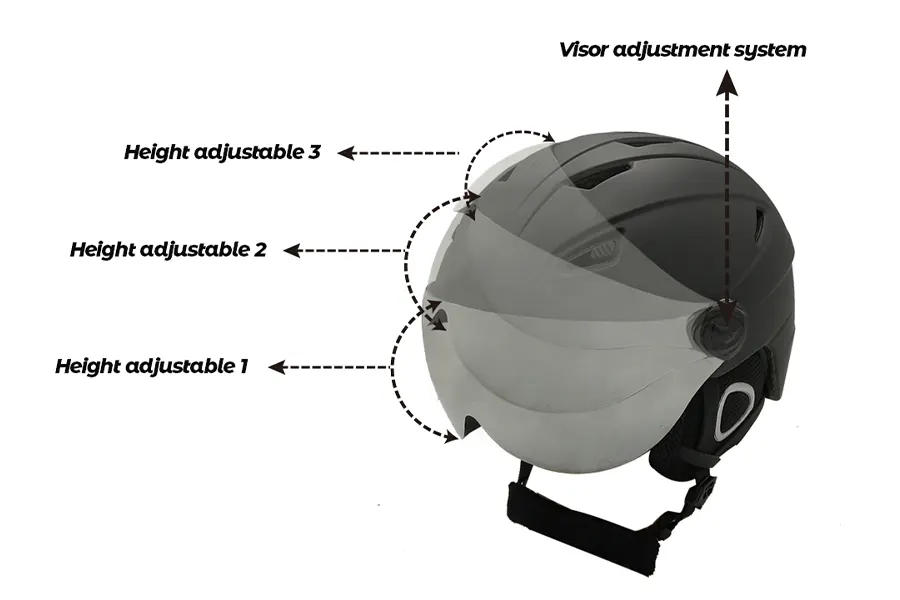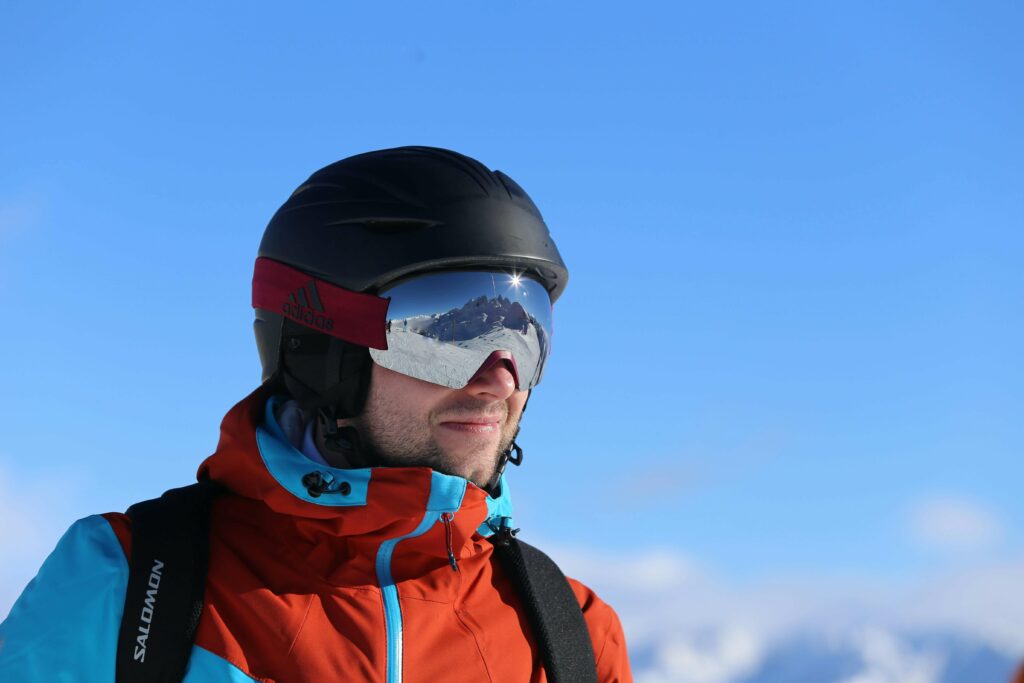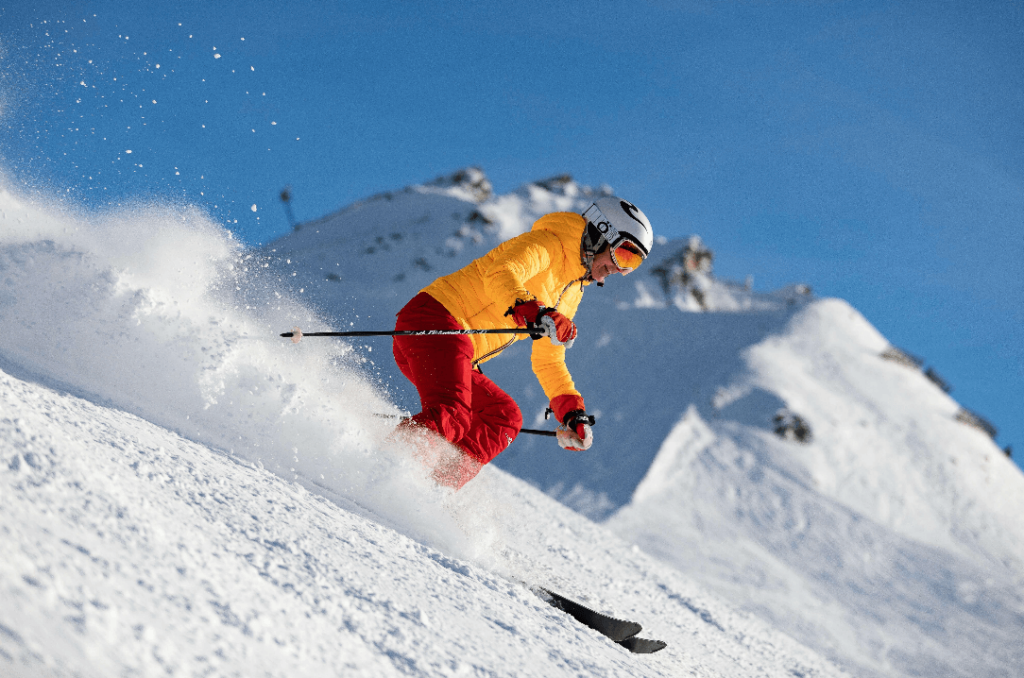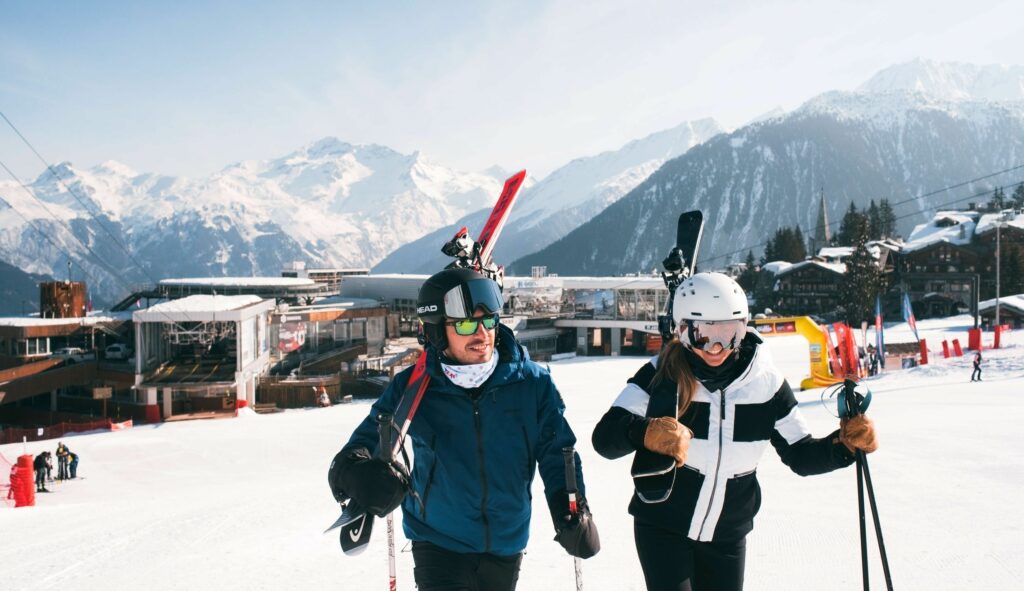Planning a skiing or snowboarding trip can be an exciting experience, but ensuring your safety on the slopes should always be a top priority. One essential piece of equipment that every winter sports enthusiast should have is a quality ski or snowboard helmet. In this article, we will explore the key factors to consider when choosing the perfect helmet for your winter adventures.
Do You Need a Helmet for Snowboarding?

The short answer is yes, you definitely need a helmet for snowboarding. While some may argue that helmets are not fashionable or necessary, the reality is that wearing a helmet can prevent serious head injuries in the event of a fall or collision on the slopes. While it’s not legally required to wear a ski helmet while skiing or snowboarding, it is highly recommended for your safety. Protecting your head should be non-negotiable when engaging in any high-speed sport like snowboarding.
Common Types of Ski or Snowboard Helmets

Hard-Shell Helmets
Hard-shell helmets are the traditional type of ski or snowboard helmets, featuring a strong outer shell made of durable materials like polycarbonate or ABS plastic. These helmets provide solid protection against impact and are perfect for beginners or casual skiers.
In-Mold Helmets
In-mold helmets are constructed by fusing the outer shell with the inner foam layer during the manufacturing process. This results in a lighter and more streamlined helmet that offers excellent protection and comfort. In-mold helmets are popular among experienced skiers and snowboarders.
Hybrid Helmets
Hybrid helmets combine the best of both hard-shell and in-mold technologies. They feature a tough outer shell for impact resistance and an inner foam layer for shock absorption. Hybrid helmets provide superior protection while remaining lightweight and comfortable for a full day on the slopes.
Ski or Snowboard Helmets Construction Materials
Polycarbonate
Polycarbonate is a lightweight and durable material commonly used in ski and snowboard helmets. It offers excellent impact resistance and strength, making it ideal for protecting your head during high-speed activities.
ABS Plastic
ABS plastic is another popular material for ski and snowboard helmets due to its toughness and durability. Helmets made from ABS plastic are reliable and can withstand rough handling and multiple impacts without compromising safety.
EPS Foam
EPS foam, short for expanded polystyrene foam, is the most commonly used impact-absorbing material in ski and snowboard helmets. It provides excellent cushioning and energy absorption, reducing the risk of head injuries in case of a crash.
Mips Technology
Mips, which stands for Multi-Directional Impact Protection System, is a groundbreaking technology designed to reduce rotational forces on the brain during an impact. Helmets equipped with Mips technology offer enhanced safety by providing an extra layer of protection against concussion.
Ski or Snowboard Helmets Sizing and Fit
How to Choose Ski Helmet Size?
When selecting a ski or snowboard helmet, it is crucial to find the right size for your head. Measure the circumference of your head with a tape measure and refer to the ski equipment manufacturer’s sizing chart to determine the correct helmet size for a snug and secure fit.
Trying On Different Helmets for the Best Fit
Try on several helmets to find the most comfortable and secure fit. Make sure the helmet sits level on your head, covering the top of your forehead without obstructing your vision. Adjust the straps and padding as needed to ensure a custom fit.
Ensuring a Snug but Comfortable Fit
A properly fitting helmet should feel snug but not tight on your head. It should not move around or shift when you shake your head, but it should also not cause discomfort or pressure points. Finding the perfect balance between fit and comfort is essential for your safety and enjoyment on the slopes.
Safety Features to Consider
Impact Protection
Look for helmets with advanced impact protection features such as multiple impact layers, reinforced shells, and integrated impact-absorbing materials. These features can significantly reduce the risk of head injuries in case of a crash or collision.
Fit Adjustment Systems
Choose a helmet with a reliable fit adjustment system, such as a dial or strap mechanism, that allows you to customize the fit to your head shape and size. A properly adjusted helmet will stay securely in place and provide optimal protection during dynamic movements.
Ventilation
Ventilation is essential for maintaining comfort and preventing overheating while skiing or snowboarding. Opt for helmets with adjustable vents or integrated airflow channels to regulate temperature and moisture, keeping your head cool and dry throughout your winter adventures.
Goggle Compatibility
Make sure your helmet is compatible with your ski or snowboard goggles to achieve a seamless and secure fit. Look for helmets with goggle clips, adjustable straps, and goggle-friendly designs that allow for easy integration and optimal visibility on the slopes.
Ski or Snowboard Helmet Styles and Designs

Matte vs. Glossy Finish
Choose between a matte or glossy finish for your helmet based on your personal style preferences. Matte finishes offer a subtle and understated look, while glossy finishes provide a sleek and reflective appearance that stands out on the slopes.
Full Shell vs. Half Shell
Decide whether you prefer a full-shell helmet that covers your entire head or a half-shell helmet that offers a more open design. Full-shell helmets provide maximum protection, while half-shell helmets are lighter and more breathable for increased comfort.
Color Options
Select a helmet in a color that matches your ski or snowboard gear and reflects your personality on the slopes. Choose from a wide range of vibrant and eye-catching colors, patterns, and designs to express your unique style while staying safe and visible on the mountain.
Visor Styles
Consider helmets with built-in visors or removable visor attachments for added sun protection and glare reduction. Visors can improve visibility in bright conditions and shield your eyes from snow and debris while enhancing the overall look of your helmet.
Customization Options
Many ski and snowboard helmet brands offer customization options, such as interchangeable liners, ear pads, and accessories, to personalize your helmet to your liking. Customize your helmet with unique features and details that make it uniquely yours and enhance your comfort and performance on the slopes.
Ski and Snowboard Helmets Certifications
ASTM F2040
ASTM F2040 is a standard certification for snow sports helmets that ensures they meet specific safety requirements and performance standards. Look for helmets that are ASTM F2040 certified to guarantee their quality and protective capabilities on the slopes.
CE EN1077
CE EN1077 is a European safety certification for ski and snowboard helmets, indicating that they comply with rigorous safety regulations and criteria. Helmets bearing the CE EN1077 certification are tested and approved for use in winter sports activities, providing added peace of mind for users.
Where to Buy a Ski and Snowboard Helmet?

As you prepare for your next ski or snowboard adventure, the quest for the perfect helmet begins. But where should you look to find the ultimate head protection for your mountain escapades? From sporting goods stores to online retailers and specialty shops, explore the various options available to ensure you make the right choice.
Sporting Goods Stores
Visit your local sporting goods stores or outdoor retailers to try on a variety of ski and snowboard helmets in person. Seek expert advice from knowledgeable staff members and explore different brands and models to find the perfect helmet for your needs.
Online Retailers or Manufacturers
Shop online through reputable retailers or directly from ski helmet manufacturers to browse a wide selection of ski and snowboard helmets. Take advantage of online reviews, sizing guides, and customer feedback to make an informed purchase decision and enjoy convenient doorstep delivery of your chosen helmet.
Ski Resorts and Rental Shops
If you forget to bring your helmet on a skiing or snowboarding trip, you can rent one from ski resorts or equipment rental shops. Renting a helmet is a cost-effective and convenient option for occasional skiers or travelers who prefer not to transport their helmet with them.
Specialty Helmet Stores
Explore specialty helmet stores that focus exclusively on ski and snowboard helmets for a diverse range of options and expert recommendations. Specialty stores offer customized fitting services, advanced safety technologies, and exclusive helmet brands that cater to serious winter sports enthusiasts.
FAQs on Ski and Snowboard Helmets
1. What is MIPS in a ski helmet?
MIPS stands for Multi-directional Impact Protection System, which is a revolutionary technology designed to reduce rotational forces on the brain during angled impacts. Helmets equipped with MIPS technology provide an additional layer of protection by allowing the helmet to rotate slightly upon impact, reducing the risk of brain injuries.
2. What to wear under a ski helmet?
It is recommended to wear a thin beanie or skull cap under your ski helmet for added warmth and comfort. Make sure the headwear is not too thick to interfere with the helmet’s fit. Avoid wearing bulky hats or headbands that may affect the helmet’s safety features.
3. How long does a ski helmet last?
The lifespan of a ski helmet depends on various factors, including the frequency of use, impact severity, and overall helmet condition. On average, manufacturers recommend replacing your ski helmet every five to seven years, even if it hasn’t been involved in a crash. Inspect your helmet regularly for signs of wear and tear and replace it if necessary.
4. How often should you replace your ski helmet?
It is recommended to replace your ski helmet every five to seven years, regardless of whether it has been involved in a crash. Over time, the materials in the helmet may degrade, reducing its impact protection capabilities. If your helmet has been subjected to a significant impact or shows signs of damage, such as cracks or dents, it should be replaced immediately. Your safety is paramount, so don’t hesitate to invest in a new helmet for optimal protection on the slopes.
Conclusion
Choosing the right ski or snowboard helmet is crucial for your safety, comfort, and performance on the slopes. Consider the type of helmet, construction materials, sizing and fit, safety features, styles and designs, certifications, and purchasing options when selecting your ideal helmet. Prioritize safety and protection while expressing your personal style and preferences with a high-quality helmet that meets all your winter sports needs. Enjoy your skiing and snowboarding adventures with confidence and peace of mind knowing you are well-equipped with the perfect helmet for the ultimate mountain experience.














